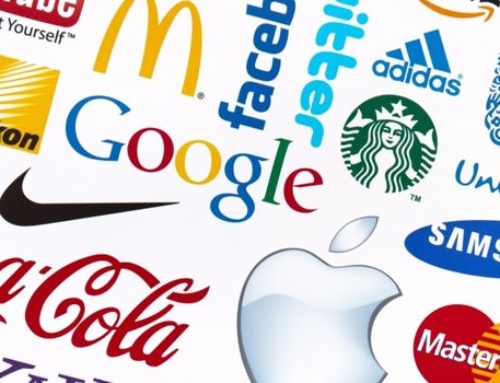“Soft power is not merely the same as influence. It is also the ability to attract. A country may obtain the outcomes it wants in world politics because other countries admire its values, emulate its example, aspire to its level of prosperity and openness. This soft power—getting others to want the outcomes that you want—co-opts people rather than coerces them. Soft power rests on the ability to shape the preferences of others.”
-Joseph S. Nye Jr., Prior Dean Harvard Kennedy School
How Brand and Reputation Differ
Reputation and brand are intertwined, confused and are different assets. Corporate reputation is largely the collection of perceptions held about a company related to quality, safety, accountability, ethics and responsibility. Today, it is a measure of character and integrity. Although it takes time to build, it can be quickly shattered when tarnished (think FaceBook, Uber, Boy Scouts of America). A good reputation is something people feel they can rely on for a predictable, quality outcome. It also predisposes them to believe that a company acts in the right way and does the right things. Reputation is the outcome of many factors over time. IBM has a reputation for high quality, dependable products due to outstanding engineering and innovation. Johnson & Johnson has a trusted reputation for consumer-focused integrity and is revered as being honest and selflessly commitment to the welfare of families, nurses, doctors and patients.
A company’s brand, on the other hand, is a soft power tool. It is strategically created and managed to deliver specific perceptions and feelings that will help grow the business. It can build value immediately if the effort put behind it is significant. Powerful brands persuade based on an emotional connection rather than on ethical expectations (that can easily be shattered). The brand is a creative catalyst that builds a sum of associations within the mind of an individual/collective culture. It an active, living intellectual property. Unlike reputation, the brand persuades through conceptual differentiation and forges an emotional connection that creates value beyond linear rationality. While reputations build quality perceptions, brands build desire and loyalty by tapping into dreams and hopes e.g. to be cool, beautiful, smart, free, strong, loved, a good parent. Brands stand for an idea that evokes thoughts, feelings and behaviors which add add to reputation and build strong relationship capital. Think about how Join the Navy, See the World and Be All that You Can Be with the U.S. Army used conceptual power to contribute to the reputation of these services and set an emotional context of desire to join them.
To further illustrate, consider these examples. IBM has a quality reputation, but does IBM have a strong brand? What is the differentiating IBM idea that emotionally connects? Apple has a quality reputation (innovative, attractive, easy to use, sophisticated quality products) and a powerful brand that shows youthful, exciting, optimistic and empowered lives from radical creativity that is used and enjoyed (soft power). Yeti maintains a quality reputation with best in class indestructible products (keeps drinks cold longer), and a powerful brand which turned a commodity product into an object of desire with its passionate commitment to outdoor life (soft power found in the values, experiences and aspirations of outdoor life).
Underneath Corporate Brand Soft Power: Corporate Identity and Brand Identity
To build brand soft power, a company must first know its own corporate identity. The corporate identity is a differentiating, positive, self-narrative that is a fact-based. It is a clear, logical framework that features the company at the center and shows how the company sees itself in the world. It tells a value proposition-driven story that includes differentiating competencies and assets, strategic and competitive advantages, company vision and values and establishes unique value creation. Rather than simply explain what a company literally is or does, a strong corporate identity defines all the elements that make a company great. This requires reflection and imagination to elevate the company to its highest credible level.
The brand identity does not have the company at the center. It has the company’s consumer at the center and is a conceptual narrative built on a factual foundation. The brand identity applies the elements of the corporate identity to the consumer’s world view so they have relevance. Unlike the corporate identity, the brand identity is creative, conceptual insight-driven and human centered. The corporate value proposition is replaced with a consumer brand promise and focuses on how consumer dreams and wishes are fulfilled by the company. While Apple may make innovative products that are radically easy to use and enjoy, they empower people to live more exciting, creatively-enriched lives and achieve things that were once not possible.
To Build Soft Power, Find Your Best
When building your brand and or embarking on re-branding, start by articulating your corporate identity. Who are you serving? What business are you really in? What are your strategic assets and core competencies? What unique value do you produce in the world and why? What are your enabling resources and points of credibility? What is your vision for the world, your mission within it and the values that govern how you work? Most important, what does your company do better than anyone else? This last question is the most important. Grapple with it and find an answer. Where are you better and where are you the best? In the absence of tangible superiority, think about conceptual superiority. Maybe your company tries the hardest, cares the most, gives the greatest freedom, or reduces the biggest barriers. Work hard to find your best and keep it. Don’t suddenly drop your best like Weight Watcher’s recently did when it walked away from 50 years of being the best at weight loss to embrace leadership in wellness (brand disaster).
With a solid, compelling corporate identity as a foundation, build your brand. Shift focus to the dreams, desires, fears and needs of the consumer – buyers, influencers, end-users. Search to find the highest common denominator between what your company can deliver and what these people really want/need. Use “your best” as an authentic validator and enabler that gives your brand a position of power. Leverage “your best” to secure your ownable place in the world.
With a strong corporate identity and brand working together, you will have the tools for a soft power advantage in your market to produce greater attention, loyalty, advocacy, excitement and performance while spending much less on marketing, acquisition and retention.
FACT FOR THOUGHT
3,788,235 Births
The U.S. birthrate in 2018 of 3,788,235 births represented the lowest number of births in 32 years and sank the U.S. fertility rate to a record low. 2018 was the fourth consecutive year of birth declines, according to the provisional birthrate report from the Centers for Disease Control and Prevention.
Photo Credit: Photo by Christopher Campbell on Unsplash
Enjoying Overhead Space? There’s More to Love.
Subscribe to Overhead Space to receive mind-expanding content that helps you connect the dots in new ways.




